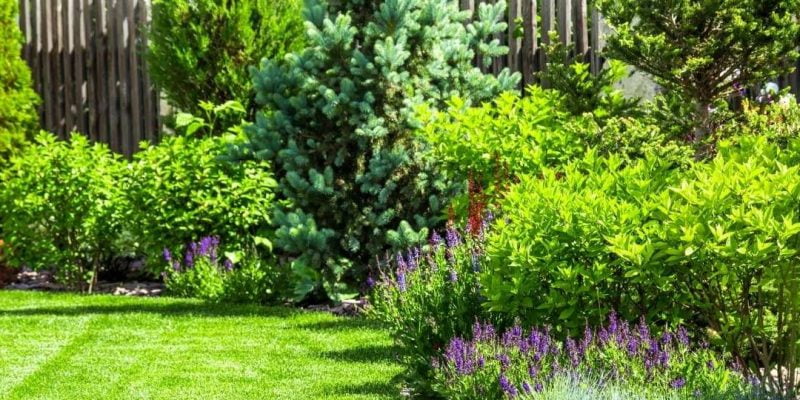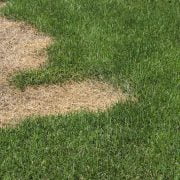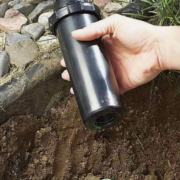Since the beginning of time, dads everywhere have strapped on the standard New Balances to go out and create a yard that “wows” all their friends and family. As time persisted, this became more of a priority since studies show how Americans are spending more and more time in their backyards than ever before.
Many are unaware of the intentional time, effort, and money spent preparing an outdoor space ready for the summer months. The thing is, if you put this off, aesthetics may not be the only issue. When you put regular yard, enclosed patio prep/maintenance on the back burner, things can become overgrown, overwhelming, and the fixes can become overpriced.
Regular yard maintenance is important for aesthetics and resale. Spring is the perfect time to get your yard ready. Maintenance tips include raking, removing weeds, pruning, aerating and fertilizing, planting, cleaning outdoor fixtures, and creating a great looking yard sign. A well-maintained yard and a well-designed yard sign can attract potential buyers and increase the value of your property. Getting your yard ready in the springtime can make your outdoor oasis more enjoyable and relaxing. The tips below will provide insight into the different steps to take.
1. Aerate
Aerating your lawn is one of the essential steps to a healthy yard. Aerating helps roots grow deep and strong by placing holes in the soil. Thick grass and lawn thatching can become a barrier to root health, so the holes allow air, water, and nutrients to pass over the grass and flow through the soil.
If your grass has a spongy feel or is having a hard time standing up straight it is likely time to aerate. The best time to do so is during the active growing season (Spring/Summer). Sometimes it is a good idea to dampen the grass before aerating. This is especially true for people that live in dry areas.
There are a couple of tools available. The type you use depends on your specific yard:
- Plug aerator: Plug aerators pull out chunks of soil to make space for air, water, and other nutrients. They are generally about dime-sized;
- Spike aerator: Spike aerators punch holes into the ground without removing any soil. It loosens the soil without leaving chunks all over the yard.
2. Rake
Leaves, grass clippings, branches, and other forms of thatch should be raked up and removed from your yard regularly to keep fence planters and other trees safe. Thatch blocks sunlight, air, water, and other nutrients from reaching the grass and soil, so it deters from overall growth and health.
If you plan on thatching, you should rake first so that you aren’t incidentally pushing decaying plant material into the ground. The best time to rake up any yard debris is during the spring and early summer months.
3. Reseed & Fertilize
If your grass is patchy or thinning, it may be a good idea to reseed and fertilize. When used in conjunction with one another, one promotes new growth, while one maintains by supplementing any missing nutrients. Reseeding should be done before the active growing season, and fertilizing should be done twice a year — once during the fall and once during spring.
4. Make Additions
If you are going to spend copious amounts of time in the backyard during the summer months, it is important to make it your own. Simple additions like a water feature, outdoor plants, patio furniture, or even a deck can perfect your outdoor space.
Some things you may be able to do yourself, but some require the help of professionals. For example, in Pennsylvania, you need special licenses, permits, and thorough inspections to add a deck. So if you have it in the works, it may be best to take advantage of deck builders in Landenberg, PA for their local expertise.
5. Mow Regularly
Mowing helps keep your yard healthy, but it also is for aesthetic appeal. A manicured lawn is great for curb appeal and keeping your neighbors happy. Create a mowing schedule for the peak months. While many can look at a yard and determine whether it needs mowing, it can help you stay in the habit of regularly mowing. It is a good idea to use a thatching blade to remove any dead grass from your yard. Then as mentioned above, rake all of it up afterward.
You want to be sure not to cut your grass too short as well. This can lead to your grass dying because grass acts as a shade for your soil in the hot summer months. It is better to start high and then lower your mower as you see fit.
6. Create a Watering Schedule
Watering is quintessential to a healthy lawn. There are some areas where you may not need to water because of naturally occurring humidity and rainfall, but for the most part, healthy lawns are the result of regular watering.
Create a schedule for when you water. Avoid watering during the hottest part of the day to reduce evaporation waste. You should also avoid watering if it won’t get a chance to dry out as well — as this can promote unwanted growth like moss or mushrooms. Overwatering can suffocate your grass and hinder your root health. Be sure to check your soil before watering to avoid potentially adding too much water to your lawn.
7. Prune Back Greenery
Overgrown shrubs, trees, and plants can be an eyesore, but they can also cause additional issues outside of aesthetics. Be sure to trim or prune back any excess greenery. This helps ensure it doesn’t act as a barrier to your lawn. Additionally, regular pruning helps promote healthy growth for the foliage itself.














Comments